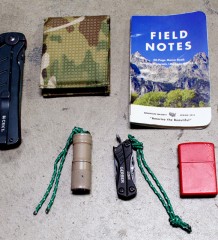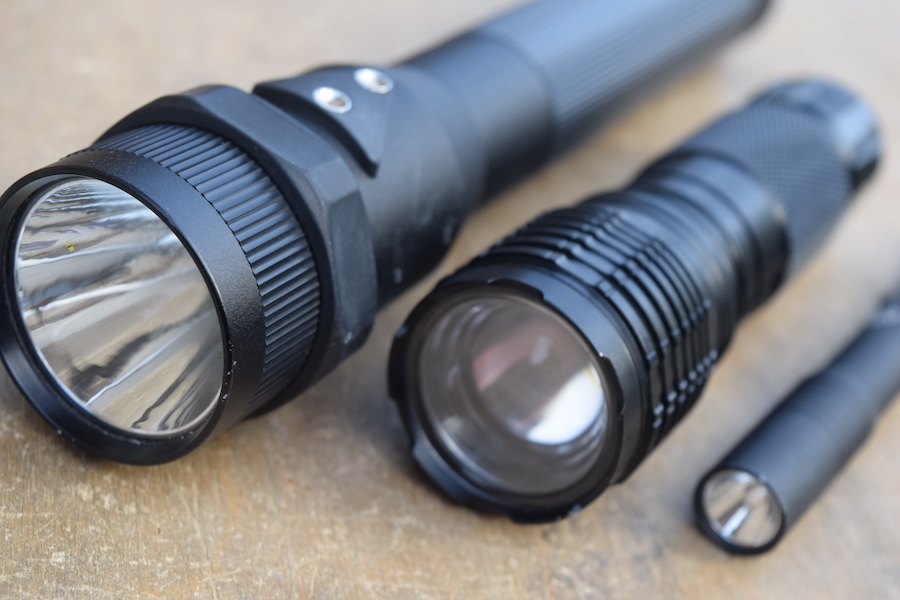
For most people, knowing how to choose a flashlight is easy. You just go to the hardware store and grab whatever seems reasonable. While that will work fine in a pinch, your approach should be more involved if you actually need a flashlight like, say, if you work in a profession or participate in activities where you must rely on a flashlight for extended periods of time. If that’s the case, keep reading.
In this torch buying guide, we’ll cover how to buy a flashlight. It’s easy when you know what to look for. We’ll go over the factors to consider. Yes, there are factors to consider. There are a lot, actually. In this article, we’ll cover topics like flashlight styles, lumens vs candela, price, and flashlight features like bulbs, batteries, controls, and light color.
Styles of Flashlight
Before choosing a flashlight, you should consider how you’re going to use it. Hikers need to see so they don’t twist an ankle. Police officers will occasionally search for a fleeing suspect. And utility workers tend to work in remote locations during inclement weather. Determining exactly how you’re going to use a flashlight will dictate the features you should look for before buying one.
Fortunately, there are multiple styles of flashlights that each have a set of characteristics preferable for certain activities.
- Penlights are about the size of a pen, as the name implies, and will fit in your pocket.
- Tactical flashlights, used by first responders, are durable and designed for ease of use.
- Weapon lights, although grouped with tactical flashlights, can be fixed to a firearm.
- Headlamps wrap around your head, so you can illuminate what you look at hands-free.
- Lanterns function just like old-timey ones except they use bulbs instead of fire.
- Spotlights vary in size from hand-held to mountable and will illuminate a large area.
However, this article will primarily focus on the standard tubular flashlights like a penlight and tactical flashlight.
Flashlight Power: Lumens vs Candela
There are two units of measurement used to rate flashlights. These include lumens and candela. Finding the right balance of the two will help determine depth of use.
The main rating, lumen, measures the total amount of light emitted. Typically, the higher the lumen count, the more expensive the flashlight, so you don’t always need the most lumens.
Another rating to consider, though, is candela, which measures the light’s intensity. Candela will determine the flashlight’s suggested or intended purpose.
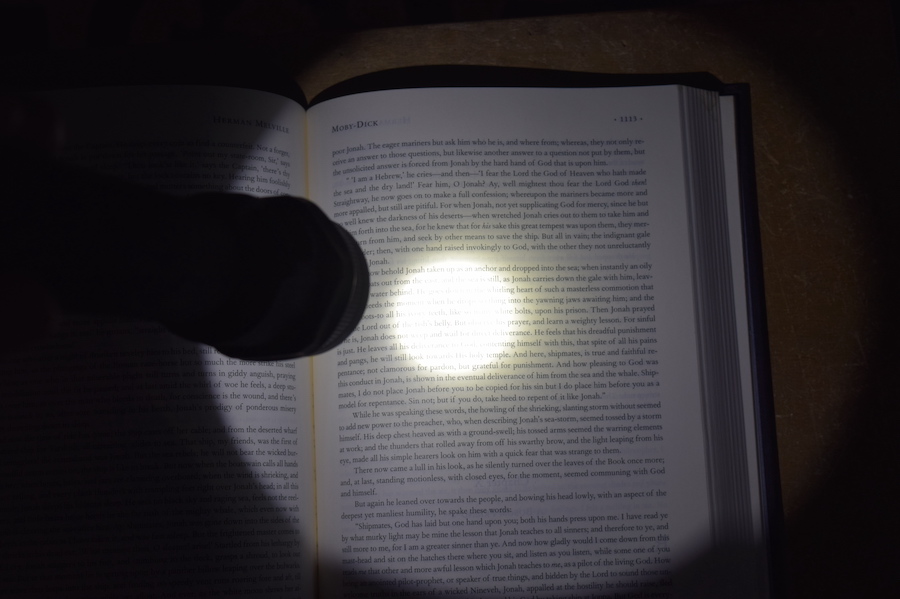
Light concentrating in one spot washes out the page. This would be considered a high candela count.
For example, a flashlight with a high lumen count and narrow beam will throw light a great distance. In that instance, the candela will be higher because the light is concentrated in one direction. In other words, it’ll shine light far away, but not over a large area — similar to a spotlight..
On the other hand, a flashlight with the same lumen count and a wide beam will have a lower candela count because the light is dispersed over a wider area. This means the throw will be shorter, similar to a desk lamp.
Flashlight Features
When you think about how to choose a flashlight, you’re really thinking about choosing the right flashlight. While style will dictate how you use it, flashlight features will affect quality and price.
Bulbs
Incandescent bulbs are common, but they’re a little dated, and they have their drawbacks. Today, the vast majority of flashlights nowadays use LED, or Light Emitting Diodes. They function by pushing an electric current through a microchip.
Compared to incandescent bulbs, LEDs have no moving parts or filament, they’re highly resistant to shock, and they draw a very low current, so they won’t wear out your batteries. While a typical incandescent bulb might last seven or eight hours, an LED can last 100s to 1,000s of hours.
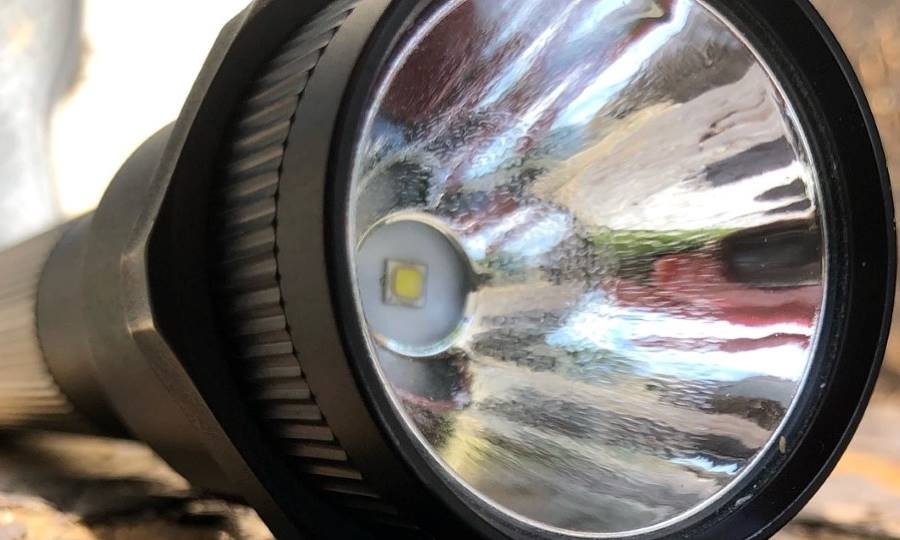
An LED bulb inside of a flashlight.
Batteries
When you’re talking about batteries, it’s easy to get lost in the minutia, so we’ll try to keep it simple. A flashlight will either be rechargeable or use disposable batteries. There are pros and cons to both.
Rechargeable flashlights are available in two configurations. You can either recharge the battery while it’s inside the flashlight (similar to your phone), or remove the battery and then recharge it. The power cell will consist of either NiMH or Li-ion.
The main benefit of rechargeable flashlights is longer battery life, but they tend to cost more up front. In general, a rechargeable flashlight is better for everyday carry or heavy use.
Non-rechargeable flashlights cost less and tend to weigh less, but you have to keep buying batteries. Therefore, these are better suited for backup or pocket flashlights.
With battery powered flashlights, you’ll often hear a debate about alkaline vs lithium. Lithium batteries perform better, especially in the cold, and last longer. The drawback is they cost more. For occasional or emergency use, alkaline batteries are adequate for the average person.
Modes
For most handheld or tactical flashlights, operation requires a simple push of a button. That button is located at the head of the flashlight, on the tail-cap, or both. Yet, when the flashlight has multiple modes, and there’s only one button, it can be hard to tell just by reading the description how to operate it.
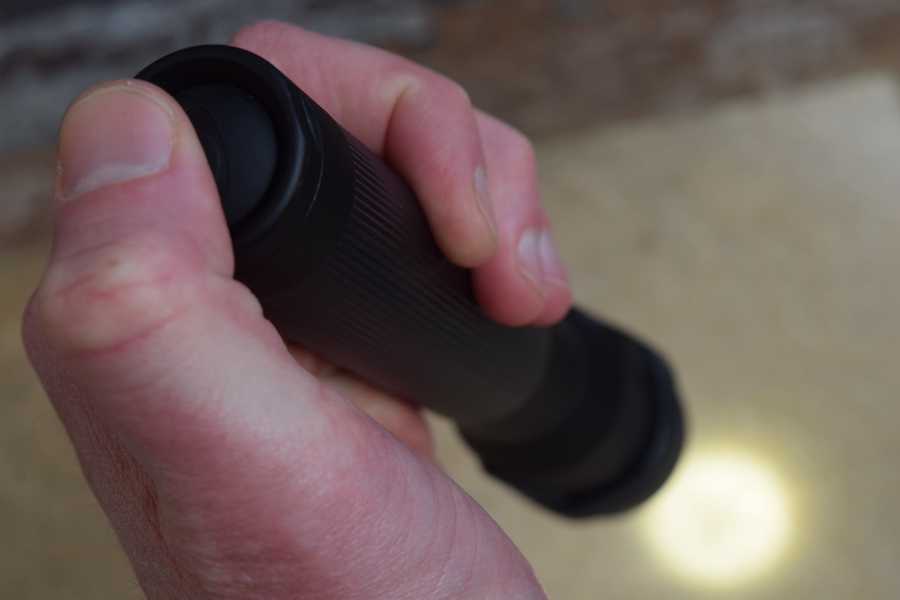
The Streamlight Stinger flashlight is equipped with a tail cap button.
A tactical flashlight will typically have four modes: high beam, medium beam, low beam, and strobe. While the differences are self-explanatory, the main takeaway should be how they drain the flashlight battery. Manufacturers will provide estimates, but in general, high beam uses more power because it provides more light, whereas low beam uses less power because it provides less light.
How you switch between modes depends on the brand. With lower-end flashlights, you might have to toggle through each setting just to turn it on and off, whereas higher-end flashlights require some technique. For example, the power button on the Streamlight Stinger does four things:
- Half press the button to flash or hold the light
- Fully press the button to lock the light on
- Depress and hold to cycle through intensities
- Double-click the button to activate the strobe
Light Color
A standard flashlight uses white light, but depending on what you’re doing you may want to consider using another color. Filtering the light can give you an advantage in certain situations.
- Blue or red filters are useful if you’re trying to avoid detection because they aren’t visible from far away.
- Green is useful for night fishing because it’s very soft and won’t spook the fish.
Additionally, there are dedicated special purpose lights that, for example, use ultraviolet light, which bouncers and TSA officers use to screen for fake IDs or counterfeit bills.
Price
Flashlights will vary in price depending on quality, power, and features. Fortunately, there are a lot of middle-ground options. Reputable brands like Streamlight, SureFire, Fenix, and others make durable tactical flashlights with a dependable output and rechargeable battery. Following that standard, you’ll usually find pocket lights for less than $80, and standard hand-held lights for less than $125.
How to Choose a Flashlight
If you want to know how to choose a flashlight, remember to consider the style, power, and features. While price will always factor into your decision, you should be ready to drop about $100 if you want a good flashlight.
What qualities do you look for when choosing a flashlight? Tell us how you choose a flashlight in the comments below. And, for all your flashlight needs, go to OpticsPlanet!
- Project ChildSafe: Distributing Gun Safety Locks Since 1999 - October 7, 2021
- Understanding Different Types Of Triggers & How They Work - August 24, 2021
- How To Draw A Pistol From A Holster Step-By-Step (Video) - August 24, 2021
Related Posts
« Fjallraven Keb and Barents Pro Trousers Review The Bugout Bag and The Family Bugout Bag 101 »


